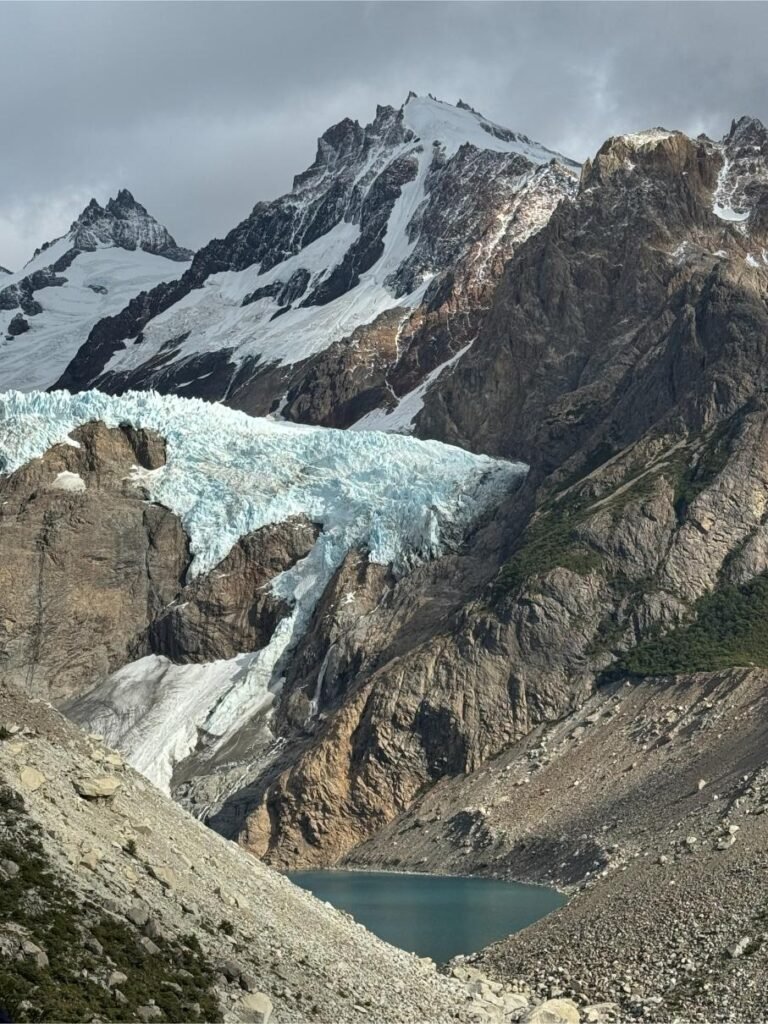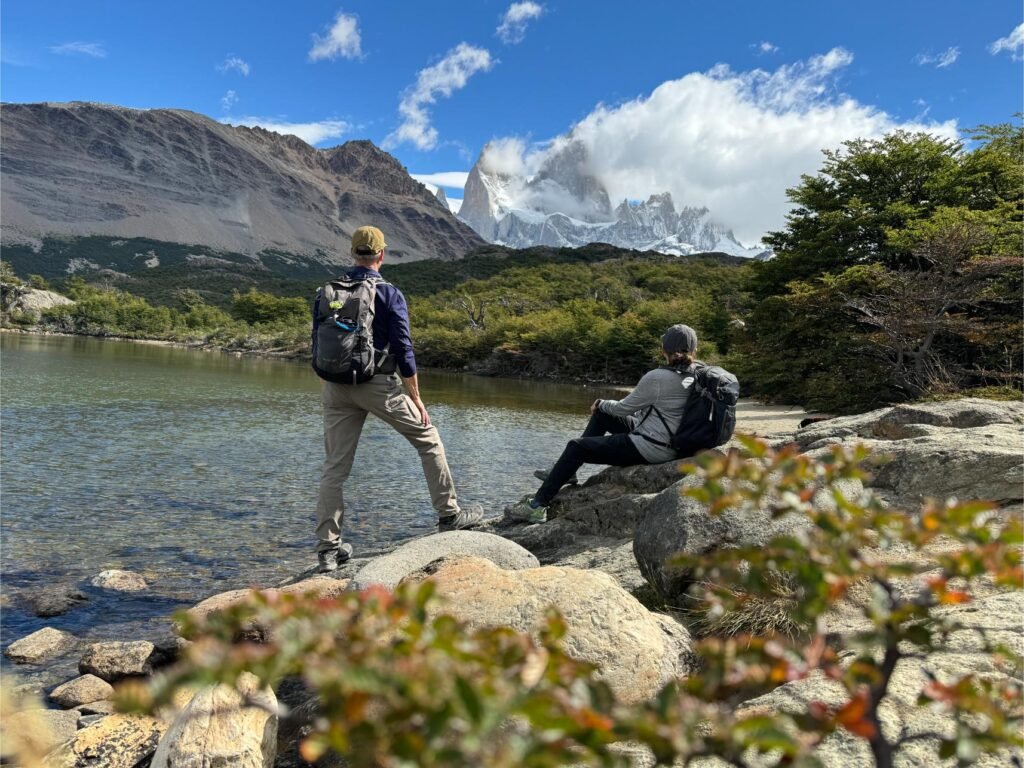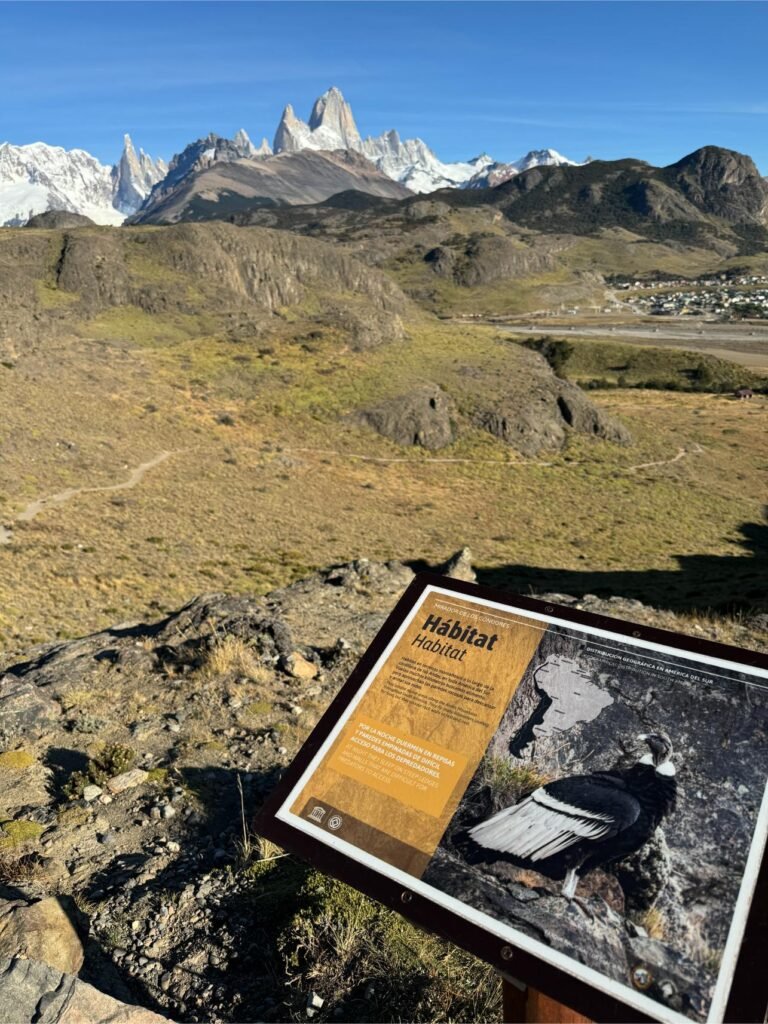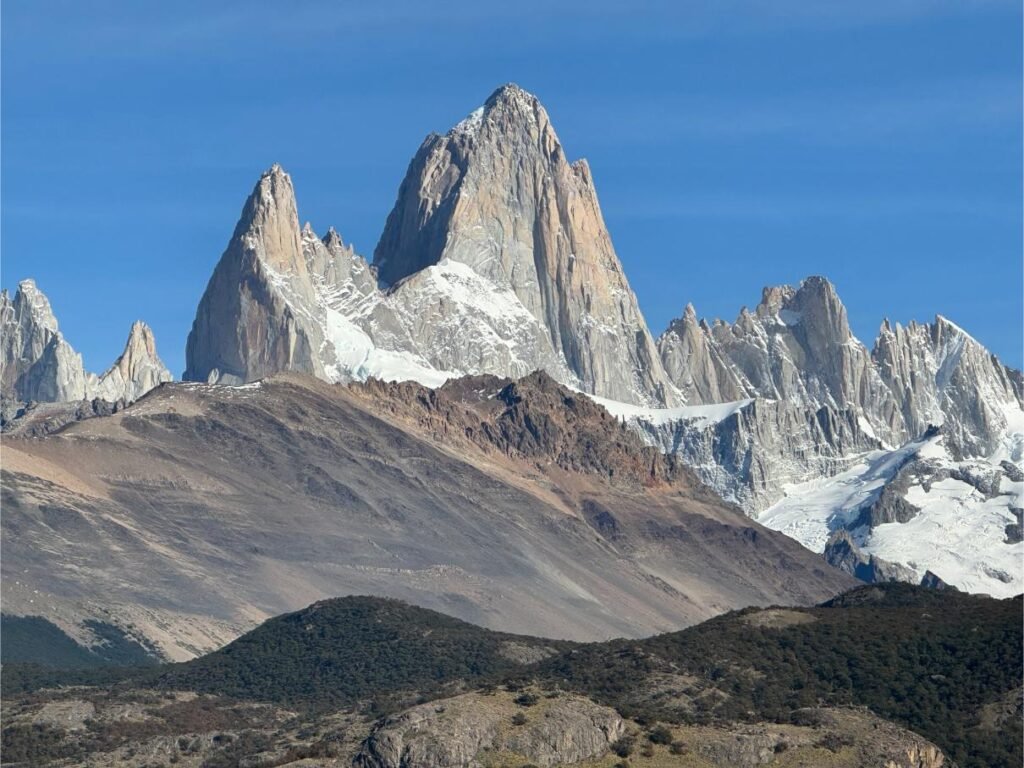
Discover an authentic mountain paradise when you venture to El Chaltén in Argentine Patagonia

If you’re an experienced backpacker or trekker, you probably have El Chaltén on your radar. Or you might have already been to this small, Patagonian mountain town at the tail-end of the planet and know that it’s the “National Capital of Trekking” in Argentina. The government officially proclaimed it as such for its pristine and protected natural environment, numerous trekking circuits and dozens of high technical climbing routes.
Located in the Southern Andes, in Los Glaciares National Park, El Chaltén is set amid a valley between two rivers, at the foot of the unmistakable Cerro Chaltén or Mt. Fitz Roy. This mountain is the predominant figure within a stunning, soul-stirring landscape. The name Chaltén is a term used by the ancient people for this sacred peak. It means “Smoky Mountain” because of the impression it gives when the wind creates cloud columns that drape atop it.
As for its other moniker, that belongs to British Captain Robert Fitz Roy, who helmed the HMS Beagle. You might recall this is the ship that went to Patagonia with Charles Darwin back in 1834. Presumably Fitz Roy and Darwin were the first Europeans to view the mountain, though they never climbed it. They did, however, make maps of large sections of the Patagonian coast. It was actually another well-known explorer, Francisco Moreno, who later surveyed the area and named the peak Fitz Roy, in honor of the captain.

Clouds come and go over Fitz Roy, photo by Debbie Stone

Guide Danielle was a font of knowledge, photo by Debbie Stone

Entrance to National Park, photo by Debbie Stone
Climbers have been coming to El Chaltén since before this young town was even founded, which wasn’t until 1985. The mountains, particularly Fitz Roy and nearby Mt. Torre, are among the most famous massifs in South America and are legendary in the world of mountaineering.
At an imposing 11,171 feet, Fitz Roy appears to pierce the clouds, while Torre, a white granite shaft, juts 10,280 feet above sea level and stands in a row with several other peaks above 9,000 feet. They line up like shark’s teeth in an arc-like formation.
If Fitz Roy looks familiar, you’ve probably seen pictures of it, as it’s the mountain that appears in Patagonia clothing’s logo and is a favorite photography subject among noted photographers.

Backpackers reign in El Chalten, photo by Debbie Stone

Glaciers abound! photo by Debbie Stone

Hiking amid such beauty is soul-renewing, photo by Debbie Stone
The first mountaineers to successfully ascend Fitz Roy was a pair of Frenchmen, Lionel Terray and Guido Magnone, back in 1952. As for Torre, early claims of ascent were shrouded in controversy. It wasn’t until 1974, when a four-man Italian team led by Casimiro Ferrari made the first undisputed ascent.
Upon arrival in El Chaltén, you’ll quickly notice this is a backpacker haven. The mostly youthful, high-energy guys and gals weighed down by their heavy packs initially made me feel like a fish out of water. I am certainly not young and definitely not a backpacker. I had come to hike amid the splendor, but only with a daypack upon my back, as I planned to return to my hotel each evening for a comfy bed and hot shower. I soon learned, though, that I was in good company, as there were plenty of other like-minded travelers of a “mature” age!
Your first stop in town should be at the Guardaparque Ceferino Fonzo Visitor Center where you can get maps, recommendations on trails, weather conditions, etc., from the friendly, English speaking staff. There’s also a tiny museum in the building with some exhibits on mountain climbing, nature, wildlife and geology of the region, but the info is all in Spanish. With my rudimentary language skills and the pictures on display, I was able to get the gist of some of it.
You’ll learn there are trekking trails for all levels of hiking here. It helps to be active, obviously, with some hiking and elevation experience in the mountains, but no, you don’t need to be an uber athlete to experience this wonderland.
However, if you’re not used to hiking in the mountains or if you have some doubts about your physical condition, it’s highly recommended to start doing some short walks before undertaking treks of longer lengths.
Within just an hour or two, you can get to several nice viewpoints to admire the impressive peaks and glaciers dominating the horizon. From Los Cóndores, for example, you might even spot a condor in flight, as this is an area they frequent. Condors are one of the largest flying birds in the world, boasting the longest wingspan of a raptor, a whopping 10.5 feet! Due to their weight and size, they prefer to fly in windy areas. I saw a few while hiking and they were majestic creatures, soaring and gliding on the air currents amid the mountains and valleys.

Hiking across the wetlands, photo by Debbie Stone

Mountain climbing exhibit at visitor center, photo by Debbie Stone

Hiking routes display, photo by Debbie Stone
For more experienced hikers, the most iconic trek is Laguna Los Tres. Roundtrip, it’s a fifteen-miler, out-and-back trail, thus a full day adventure that requires stamina. The majority of the route is not overly difficult, but the last mile is reportedly quite rocky and extremely steep. At the end, you’re rewarded for your efforts, as you’ll be at the foot of the mythical walls of Fitz Roy and its surrounding peaks, with a view of the De los Tres Glacier. Due to its popularity, this trail is known to get busy in spots, especially during high season in Patagonia (Dec.-Feb.).
The Patagonia package my husband and I booked included a hiking guide for one of the days we were in El Chaltén. Although we don’t usually hike with a guide, we were pleased to have Danielle with us, as she was incredibly knowledgeable about all things Patagonia. She was also very upbeat, enthusiastic and passionate about this glorious destination.
Danielle suggested we drive up to the north end of the park and start hiking southward to the picturesque Piedras Blancas Viewpoint, where the lake and glacier of the same name can be seen in all their glory. We then continued on, eventually connecting with the Laguna Los Tres trail. The connection was at the point where the path veers and heads up for that last steep mile. Instead of following this spur, we kept going, following the Laguna Los Tres route all the way back to town, a total of twelve miles. This was plenty ambitious for me! And what I particularly appreciated was the fact that the hike was not out-and-back, so no retracing of steps.

One of many watering holes in El Chalten, photo by Debbie Stone

Park entrance, photo by Debbie Stone

River crossing, photo by Danielle (guide)

Resting at the lake, photo by Danielle (guide)

The landscape is diverse, photo by Debbie Stone
As we trekked, the landscape was ever-changing, keeping the hike interesting and engaging, which is always important on a long day. At each mirador or viewpoint, we’d stop and gape at the dramatic beauty, marveling at the snowcapped, jagged cathedrals (and yes, Fitz Roy was kind enough to appear in its full, unobstructed regalia), shimmering glaciers, pristine alpine lakes and serpentine rivers.
It was a veritable sensory feast, as we hiked across verdant valley floors, traipsed through enchanting forests, navigated a few streams, stopped to feel the spray of a thundering waterfall and more, all on this memorable parade of nature’s top hits.
Like other guides I have encountered over the years, Danielle knew “guide speak,” or the nebulous language for responding to questions like, “How much further until our lunch stop?” She was adept at diversion tactics, too. When she knew I was tired and starting to lag, she kept me going by asking about my work, travels, family, etc. Then when I called her on this ploy, she laughed and unabashedly admitted it. I’ve come to the conclusion that hiking guides worldwide use the same manual!

This is condor land, photo by Debbie Stone

The mountains loom above the town, photo by Debbie Stone

Sublime landscape, photo by Debbie Stone

View of El Chalten, photo by Debbie Stone

Welcome to El Chalten, photo by Debbie Stone
We were prepared for turbulent weather, as high winds and storms are typical for Patagonia, along with obscured views of the mountains. But these conditions never materialized during our stay. Mother Nature was in a benevolent mood and gave us blue skies, sunshine, some puffy clouds and a gentle wind for much of the time. Rare luxuries according to the locals.
When you’re done hiking for the day, there are plenty of watering holes to toast your accomplishments in town, along with a variety of restaurants and cafes to satisfy your hunger pangs. For such a remote, little place, I was surprised to find a wide range of food – regional, gourmet and international specialties, vegetarian and vegan dishes and a host of other options to satisfy your preferences. The same goes for accommodations, as there’s everything from campsites, mountain huts, hostels and cabins to hotels and inns, to suit a variety of budgets.
The vibe in El Chaltén is casual and laid back and everyone’s very friendly. You’ll hear a host of languages spoken, as this is a destination that attracts nature-loving, active outdoor junkies from around the globe. And one thing I’m sure they’ll all agree on is that El Chaltén far exceeds even the highest expectations.

Waterfalls are also a part of the scenery, photo by Debbie Stone

Unobstructed view! photo by Debbie Stone



































